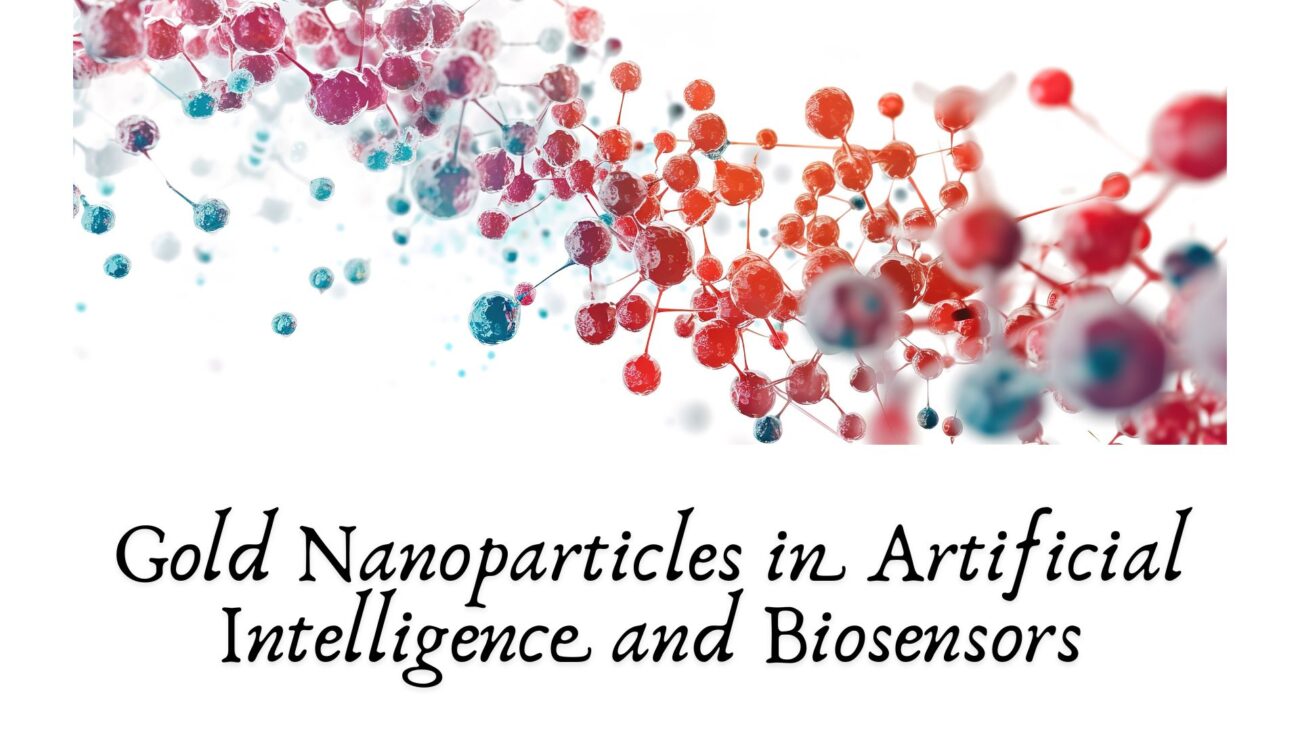In recent years, the fusion of nanotechnology with artificial intelligence (AI) and biosensors has marked a new frontier in science and innovation. At the heart of this convergence lies a powerful material—gold nanoparticles (AuNPs). Known for their unique chemical, optical, and electronic properties, gold nanoparticles are now becoming indispensable tools in the development of smart biosensing platforms and AI-integrated health monitoring systems.
This article explores how gold nanoparticles are revolutionizing artificial intelligence and biosensor technology, offering promising applications in healthcare, diagnostics, environmental monitoring, and beyond.
Understanding Gold Nanoparticles
Gold nanoparticles are tiny gold particles with diameters ranging from 1 to 100 nanometers. They exhibit remarkable properties that differ significantly from bulk gold, including:
- Surface Plasmon Resonance (SPR): AuNPs interact strongly with light, resulting in color changes that are highly sensitive to their environment.
- High Surface Area: Enables efficient functionalization with biomolecules like DNA, antibodies, and enzymes.
- Biocompatibility: Suitable for in vivo applications without triggering immune responses.
- Electrical Conductivity: Useful in enhancing the performance of nanoelectronic devices and sensors.
These characteristics make gold nanoparticles ideal for use in biosensing and as a physical medium for AI-integrated platforms.
Role of Gold Nanoparticles in Biosensors
Enhancing Sensitivity and Selectivity
Gold nanoparticles amplify biosensor responses by increasing the surface area for biological interactions. They can be functionalized to specifically bind with target biomolecules such as glucose, pathogens, or toxins. This targeted binding, coupled with SPR, provides ultra-sensitive detection mechanisms.
For example, in glucose sensors, AuNPs can act as electron carriers to enhance the signal generated by enzyme-catalyzed reactions, leading to faster and more accurate readings.
Visual Detection in Point-of-Care Diagnostics
Lateral flow assays, like pregnancy tests and rapid COVID-19 antigen tests, rely on gold nanoparticles for visual detection. The characteristic red color of AuNPs helps indicate the presence of a target analyte. When integrated with smartphone cameras and AI algorithms, these tests become powerful tools for real-time diagnostics and data collection.
Electrochemical and Optical Biosensors
Gold nanoparticles facilitate the development of electrochemical and optical biosensors with increased sensitivity. In optical sensors, AuNPs enhance fluorescence and Raman signals (Surface-Enhanced Raman Spectroscopy or SERS), allowing for detection at very low concentrations.
AI Integration with Gold Nanoparticle-Based Biosensors
Artificial intelligence enables automated analysis and interpretation of biosensor data. When gold nanoparticles are incorporated into sensor arrays, AI algorithms can process complex signals, recognize patterns, and make intelligent predictions or diagnoses.
Machine Learning for Signal Processing
Biosensors produce large volumes of raw data, especially in multi-analyte detection systems. Machine learning models, including neural networks and support vector machines, can:
- Filter out noise
- Identify abnormal patterns
- Improve sensor calibration over time
For example, a wearable biosensor using AuNPs might continuously monitor sweat composition. AI can learn to associate certain biomarkers with dehydration, stress, or glucose levels, alerting users in real time.
Predictive Analytics in Personalized Medicine
Gold nanoparticle-enhanced biosensors gather physiological and biochemical data from individuals. AI can analyze this data to predict disease risks, recommend lifestyle changes, or guide therapy selection. This is a key component of precision medicine.
An illustrative case is cancer detection. AuNPs functionalized with tumor markers can identify cancer cells in blood samples. AI can then assess the likelihood of malignancy by comparing detected patterns to vast datasets of patient histories and outcomes.
Edge Computing and IoT Integration
Many biosensors operate on wearable or portable devices. By integrating AI models directly into edge devices (smartphones, smartwatches), real-time decision-making becomes possible without reliance on external servers.
Gold nanoparticle-based sensors with AI capabilities form an integral part of the Internet of Medical Things (IoMT), contributing to the next generation of remote healthcare and epidemic tracking.
Emerging Applications and Case Studies
Smart Wearables for Health Monitoring
AuNP-enhanced patches and implants can monitor glucose, lactate, cortisol, or hydration levels. When connected to AI platforms, they enable personalized fitness and wellness tracking.
Neurotechnology and Brain-Computer Interfaces (BCIs)
Gold nanoparticles are being explored for improving signal conduction in neural electrodes. Combined with AI, these innovations may enhance BCIs used for treating neurological disorders or enabling communication in paralyzed individuals.
Environmental Biosensors
AI-driven environmental sensors using AuNPs detect pollutants, pathogens, or heavy metals in air and water. These systems can alert authorities and trigger preventive actions to ensure public safety.
Challenges and Future Directions
While promising, the integration of gold nanoparticles with AI and biosensors faces certain challenges:
- Scalability and Cost: Manufacturing AuNP-based sensors on a commercial scale remains expensive.
- Data Security: Protecting personal health data processed by AI-integrated biosensors is essential.
- Standardization: Lack of universal standards hinders widespread adoption and clinical translation.
Future research is focusing on:
- Green synthesis of gold nanoparticles
- Flexible and biodegradable sensor platforms
- Federated learning models to protect data privacy
- Cloud-based diagnostic ecosystems
Conclusion
Gold nanoparticles are not just enhancing the capabilities of biosensors—they are transforming them into intelligent systems when combined with AI. This synergy holds transformative potential across medical diagnostics, environmental monitoring, and personalized health management. As interdisciplinary research continues to break barriers, we can expect to see smarter, faster, and more adaptive biosensing solutions that bring the promise of real-time precision care into everyday life.
